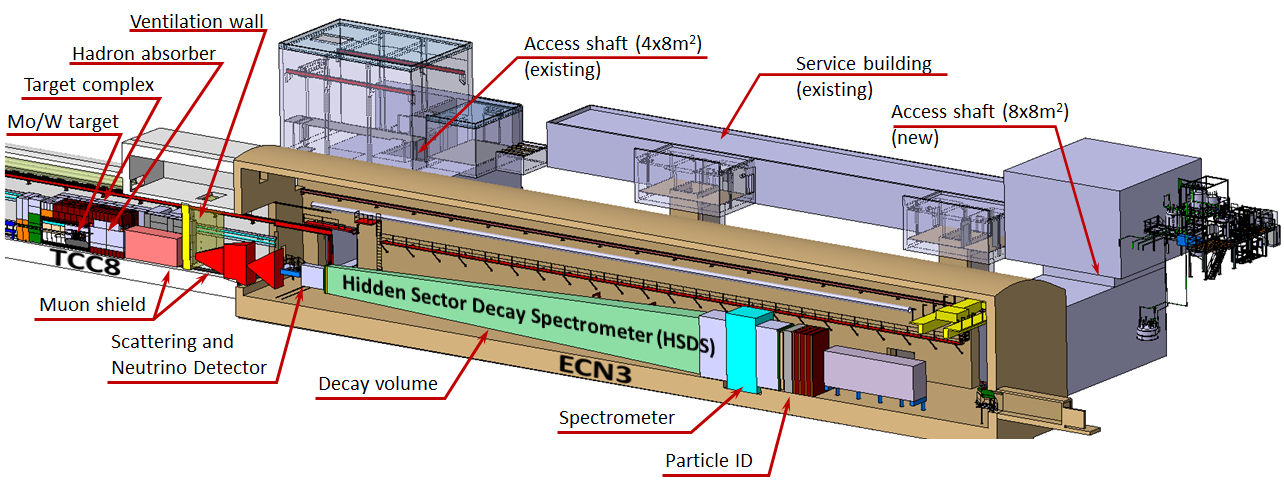
Layout of the SHiP experiment, with the target on the left. (Image : SHiP/CERN)
The SHiP (Search for Hidden Particles) collaboration was in high spirits at its annual meeting this week. Its project to develop a large detector and target to be installed in one of the underground caverns of the accelerator complex has been accepted by the CERN Research Board. Thus, SHiP plans to sail to explore the hidden sector in 2031. Scientists hope to capture particles that interact very feebly with ordinary matter - so feebly, in fact, that they have not yet been detected.
This group of hypothetical particles includes dark photons, axions and axion-like particles, heavy neutral leptons and others. These particles, which could be among the dark matter, particles, are predicted by several theoretical models that extend beyond the Standard Model, the current theory describing elementary particles and the forces that unite them.
Although very solid, the Standard Model does not explain certain phenomena. The particles predicted by the Model - in other words, the ordinary matter that we know - account for just 5% of the Universe. The rest is thought to be unknown matter and energy, which scientists refer to as dark matter and dark energy. Their effects can be observed in the Universe, but their nature is a mystery that a growing number of experiments are trying to uncover.
This is where SHiP comes in. The idea is simple: the more particles that are produced, the greater the chances of finding feebly interacting particles. A high-intensity proton beam from the Super Proton Synchrotron (SPS) accelerator will be repeatedly sent to a target, a large metal block, producing a vast number of particles. Among them, scientists hope to find particles from the hidden sector. Thanks to the very high beam intensity, SHiP will be more sensitive than the existing experiments.
Another special feature of SHiP is that its detectors will be placed several tens of metres away from the target in order to detect relatively long-lived particles and eliminate "background noise", in other words, particles such as muons that could interfere with the detection of long-lived particles. The experiment is equipped with a magnet system to divert the flow of muons and a large 50 m-long chamber in which the particles of interest can decay into known particles.
The experiment therefore complements the large LHC experiments, whose detectors surround the collision point and are unable to study the feebly interacting particles that travel several tens of metres before transforming. Theoretical models predict that the lower their mass and the weaker their coupling (the intensity of the interaction), the longer the lifetime of these particles. SHiP will therefore be sensitive to particles with relatively low masses.
In their journey through the detector, these particles could either disintegrate into known particles or collide with an atom of ordinary matter, which would also produce particles. The SHiP detectors have been designed to detect their signals.
Beyond the hypothetical dark-matter particles, SHiP will also study neutrinos which, despite being known particles of the Standard Model, are difficult to intercept and still hold many mysteries.
The target and the experiment will be installed in an existing underground cavern at CERN and supplied by a beam line from the SPS, CERN's second largest accelerator, which supplies several experiments and pre-accelerates particles for the LHC.
The target is a complex device that is more like a beam dump than a conventional fixed target. Under study for several years, it is a 1.5-metre-thick block made of several different metals in order to produce the specific particles required by SHiP and fitted with a cooling and shielding system.







